Exploring the Mojave National Preserve
Established in 1994, the Mojave National Preserve encompasses 1.6 million acres roughly bounded by Interstates 15 and 40. Most simply pass by this region on their way to other places (Lost Wages, Nevada for example) but it is a premier desert park. This vast and varied landscape includes dunes, dry lakebeds, granites, volcanics (domes, lava flows, and cinder cones), limestones, and sedimentary deposits which support a diverse collection of plants. The preserve includes creosote bush lowlands at 880 feet near Baker all the way up to conifer woodlands at 7,929 feet on the summit of Clark Mountain. The Mojave Wilderness is 700,000 acres of the preserve.
Within the preserve is the University of California Riverside’s Sweeney Granite Mountains Desert Research Center. The University of California’s GMDRC is dedicated to academic research and teaching and access is solely through an application approval process. This was was our basecamp. I am working on a book with Philip Rundel and Bob Patterson called California Desert Plants (Backcountry Press, late 2022) so we came to experience, explore, photograph, and write about the regional wonders. In particular, we wanted to find trees in the desert.
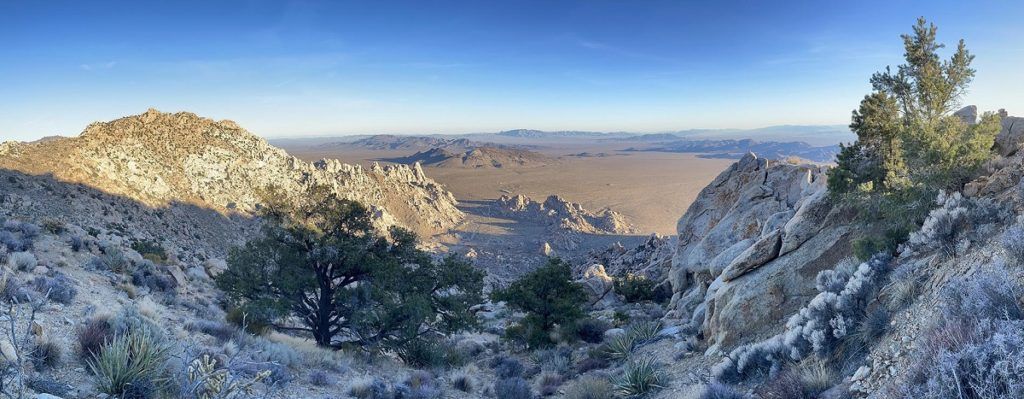
New York Mountains
In some areas of the eastern Mojave there is a mix of typical chaparral species, common in coastal California, with desert species. Chaparral elements are found in the Granite, Mid Hills, and New York mountains because of locally favorable water availability. These are all relictual populations, disjunct from broader distributional ranges. The limestone soils in the New York Mountains also receives a decent amount of monsoonal summer rainfall— unlike other regions of California’s deserts.
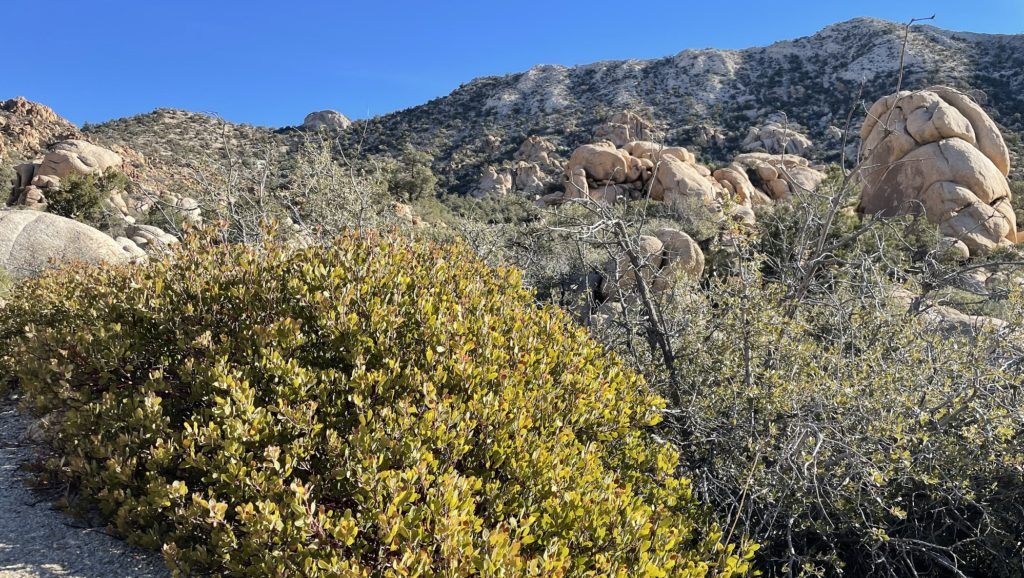
Mojave ceanothus (Ceanothus pauciflorus) and pointleaf manzanita (Arctostaphylos pungens) live here, outside a broader distribution, because of the summer rainfall regimes. These evergreen shrubs extends from Mexico into the the mountains of Texas, Arizona, and New Mexico. Here, in the New York Mountains, is one of the only known locations for manzanita species in the Mojave.
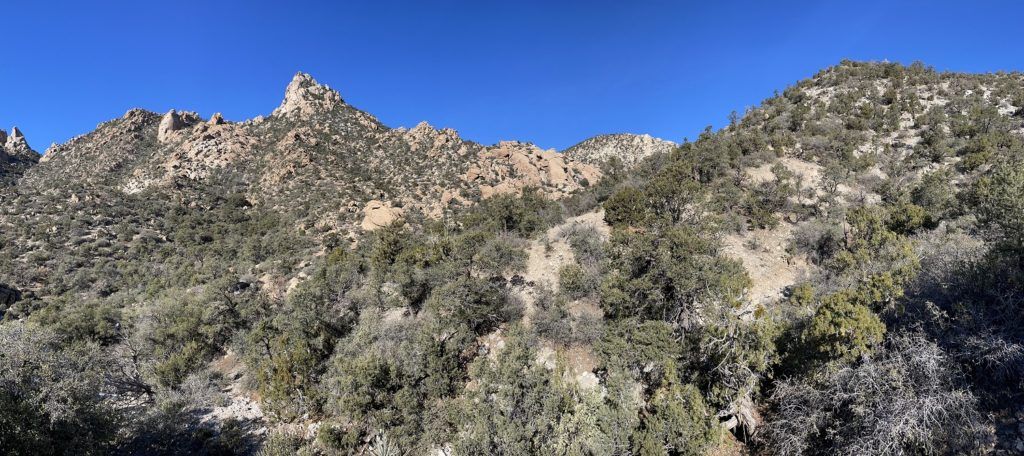
Two species of oaks survive in pinyon-juniper woodlands of the New York Mountains. Canyon live oak (Quercus chrysolepis) lives on boulder slopes, arroyos, and canyon bottoms in the higher ranges of the eastern Mojave Desert. Desert scrub oak (Quercus turbinella) is locally common in arroyos, canyon bottoms, and coarse rocky slopes of the New York Mountains and has has a CNPS rare plant rank of 4.3 because of its limited distribution in California.
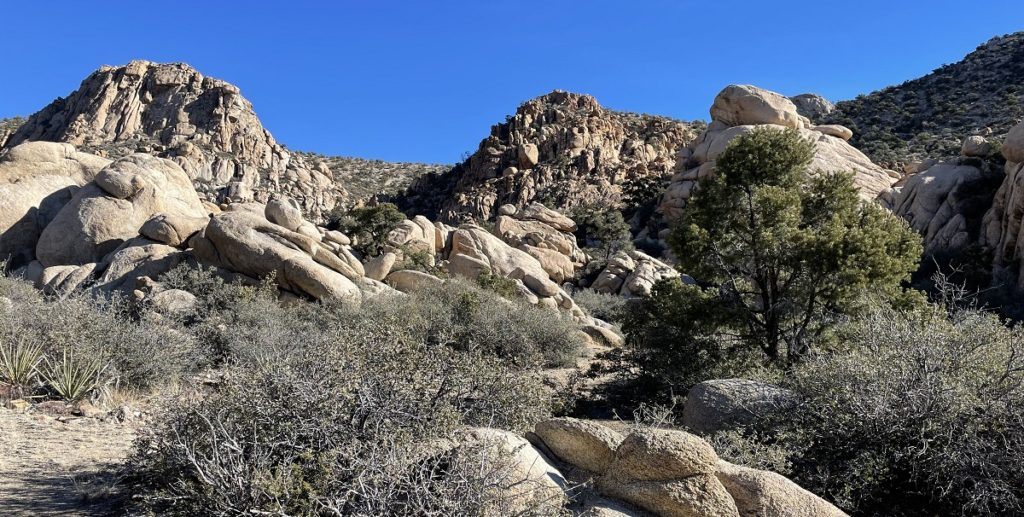
See more of my observations from the New York Mountains on iNaturalist.
Granite Mountains
This place is awesome and our base camp for the trip. In our four days at the Sweeney Granite Mountain Desert Research Center, we were blown away by the habitat and plant diversity. Scientists have documented more than 460 species of vascular plants, two amphibians, 34 reptiles, 138 birds, and 42 mammals within the preserve—which also protects a dense concentration of archeological sites.
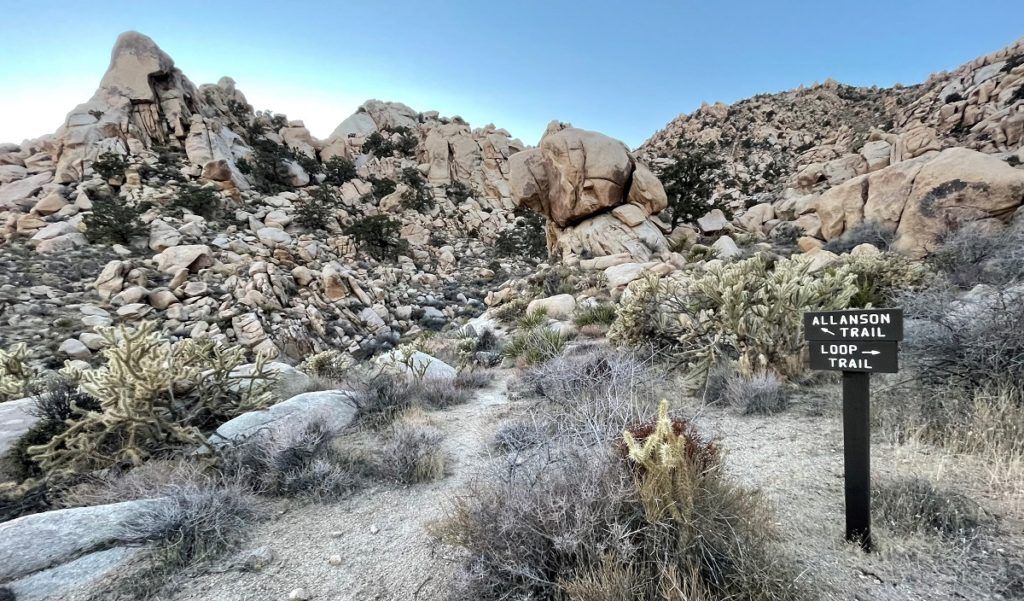
One day we climbed up the Allanson Trail to the high plateaus and ridges dominated by piñyon-juniper woodland. The hike is decorated by massive pinnacles and broken, rocky terrain high above the densely vegetated bajadas and washes below.
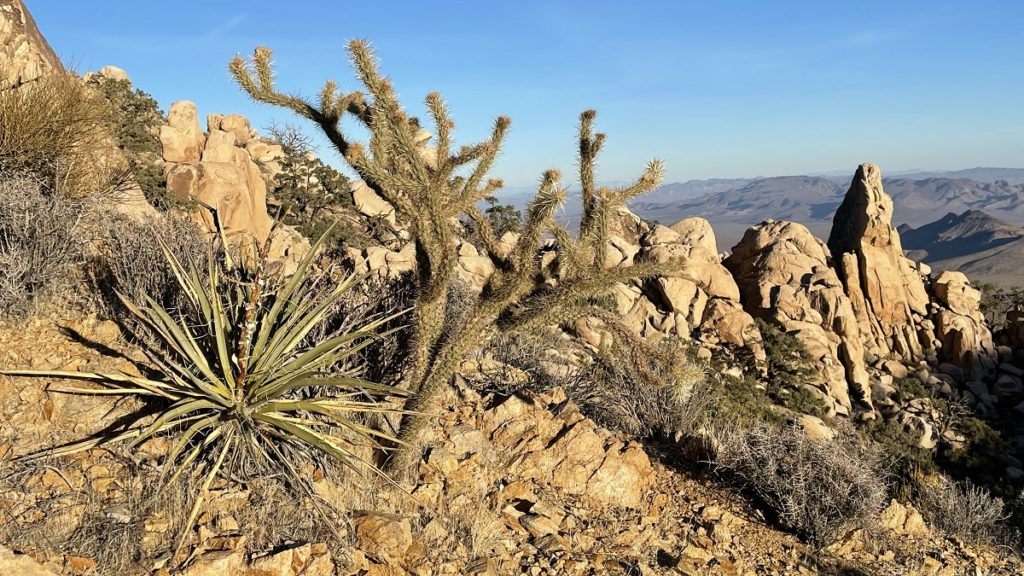
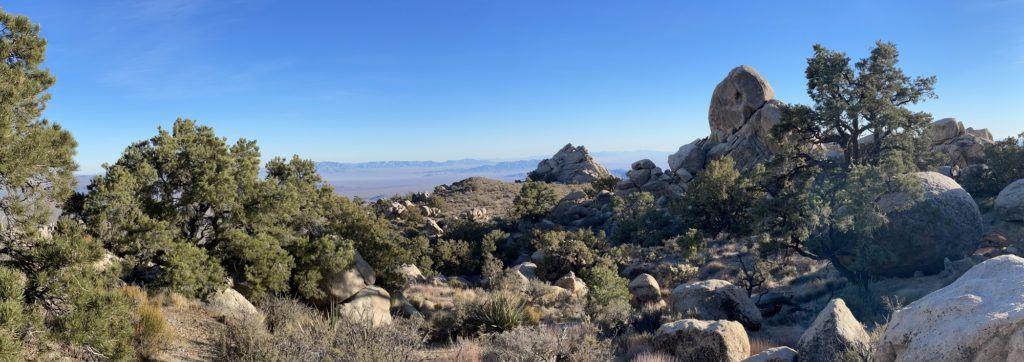
As we climbed, we entered the pinyon-juniper woodlands. More than 50 million acres of pinyon-juniper occur in the Intermountain West, mostly within the Great Basin Desert. While less common in California, there are extensive areas of pinyon-juniper woodlands in the higher ranges of the eastern Mojave Desert. The pinyon and juniper species associated in these woodlands differs across the Intermountain West but in the Granite Mountains the species are singleleaf pinyon (Pinus monophylla) and Utah juniper (Juniperus osteosperma). This association typically occurs from 5,000 feet at the upper margin of creosote bush or blackbrush shrublands to the crest of the mountains.
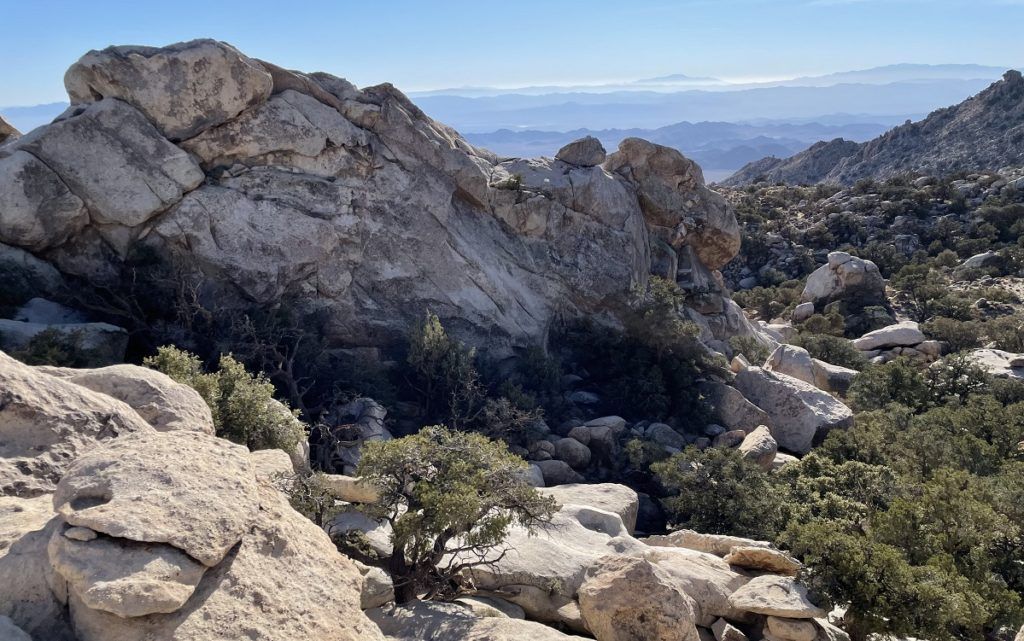
See more of my observations from the Granite Mountains on iNaturalist.
More trees in the desert
We did not visit the highest elevation trees in the desert. In California, white fir (Abies concolor) only grow in the New York, Clark, and Kingston ranges. Bristlecone pines (Pinus longaeva) occur in many ranges above 8,500 feet including the Panamint and White mountains. We will be back!

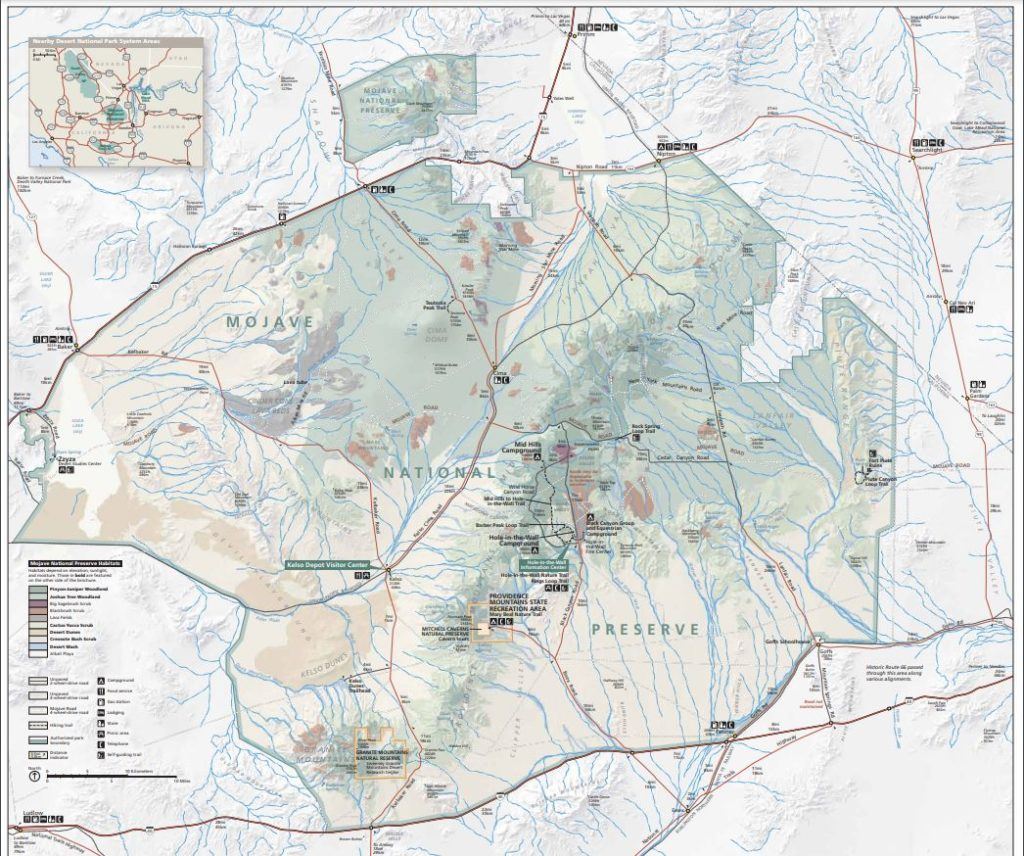
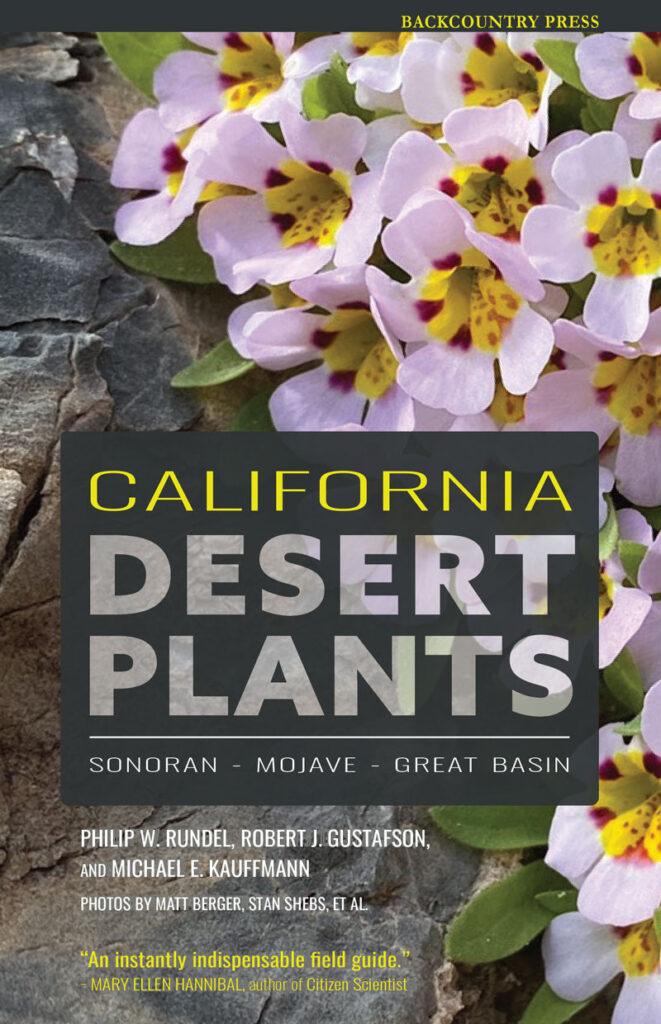
So amazing, thank you for sharing!
Thanks Caroline! Great place to visit and botanize for sure.
We also saw Silk Tassel (G fremontii) in the NY Mtns-Live Oak Canyon.
Karen – We found it too! Cool plant. Happy plant exploring.
Thank you for your great article. Without a doubt, I am most surprised about the presence of Black Maidenhair Fern, can you provide details about where you saw it (under the shade of a plant, next to a water source?) I wish I would have done my homework before I traveled from D. Valley to Joshua Tree last month. As I drove right past the preserve.and did not know.
Colleen- the ferns were adjacent to a spring and tucked up under some rocks as well. Special spot and an uncommon species!
Such beautiful and evocative photos, Michael. God, I want to be there now exploring such desert wonders!
It was really difficult to leave. Such a special place indeed.